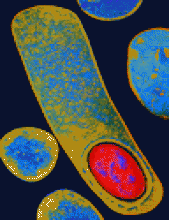Mary Hannah's commentary1 arrives at a time when women are losing confidence in their ability to give birth vaginally. To suggest, as Hannah does, the equivalence of maternal and newborn outcomes for cesarean and vaginal birth in the face of confusing science is to contribute to fear and an increase in cesarean procedures.
Hannah concludes that cesarean section is more dangerous in current and future pregnancies, but then discusses pelvic floor issues, reporting that the risk of urinary incontinence is higher for vaginal births.1 However, most studies of urinary incontinence are flawed by follow-up limited to 3 to 6 months2,3,4,5 and fail to specify the difference between minor and severe incontinence. Population-based studies report either no difference in urinary incontinence by route of birth6 or a baseline rate that is high and only somewhat improved by cesarean section.7 Notably, even nuns have a high rate of urinary incontinence.8 We need to concentrate on nonsurgical and lifestyle improvements to prevent this important problem.
Hannah also states that cesarean section is safer for the fetus and the newborn,1 and this is true for certain entities. For example, one subarachnoid hemorrhage can be prevented with every 7000 cesarean procedures, and one brachial plexus injury can be prevented with every 2200 procedures. But for every 333 cesarean sections, one newborn will experience a significant feeding problem, for every 69 cesareans there will be a respiratory problem resulting in separation of the mother and newborn, and for every 317 cesareans one newborn will require a respirator for more than 24 hours.9,10,11
Hannah muses that contemporary birth, which involves inductions, long periods of labour, continuous electronic fetal monitoring, augmentation, epidurals, forceps, episiotomy and multiple caregivers, can hardly be considered “natural.” Good point! But who is responsible for this unnatural environment? Hannah's own study of post-term pregnancy12 is the bedrock upon which our current epidemic of post-term inductions is based, leading in my institution to a rate of cesarean sections among first births in excess of 40% (the rate is about 8% for women in spontaneous labour). It may take between 500 and 2000 post-term inductions to avoid one stillbirth, but, in the process, a cascade of accepted “side effects” ensues. This situation needs fixing, but cesarean section is not the appropriate mode of repair.
Hannah uses her Term Breech Trial13 to make the point that cesarean section is safer. However, it is not appropriate to extrapolate data from subjects whose fetuses are in breech position to a population of women whose fetuses are in vertex position.
Hannah supports informed choice, but the process of informing the patient well, covering the complex and ambiguous literature about maternal and newborn morbidity and mortality, and bowel, bladder and sexual functioning, as well as the joy, power and transformative nature of vaginal birth, is likely to take more than an hour. And the person doing the informing, usually the surgeon, is in a position of conflict of interest, because cesarean section allows the physician some control over his or her life. If the consent does not cover this detail, as well as a sensitive exploration of the values, fears and hopes of the woman requesting the procedure, informed consent is a sham.
To appropriate the word “choice” in today's chaotic and industrialized birth environment is unjustified. Better to work on improving that environment by providing optimal support to pregnant women, making doula care the norm, reserving birth technology for those who need it, reconsidering the role of induction timing for the post-term fetus and making birth a truly woman-centred event, rather than a professional- and institution-focused process.
Michael C. Klein Professor Emeritus, Family Practice and Pediatrics Head, Division of Maternity and Newborn Care Department of Family Practice University of British Columbia Vancouver, BC
Footnotes
-
Competing interests: None declared.











